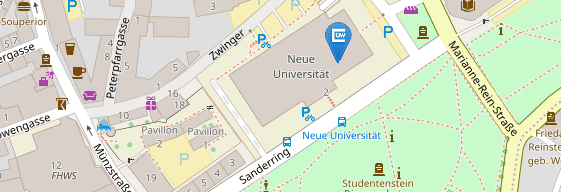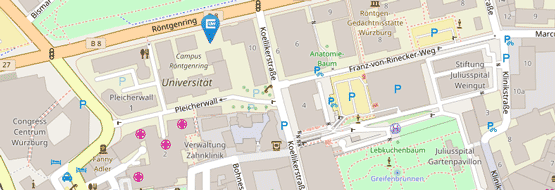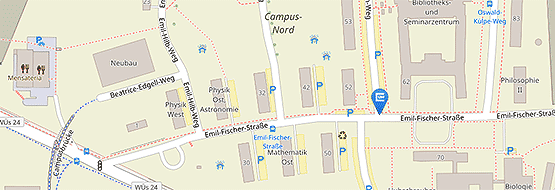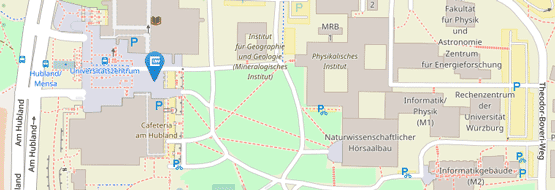Ten Years Plaques of Honour
09/16/2025The University of Würzburg commemorates outstanding researchers with plaques of honour. The project is now celebrating its tenth anniversary. The three initiators received their own anniversary plaques at the celebration.

64 of them - that's how many plaques of honour Julius-Maximilians-Universität Würzburg (JMU) has already put up in the cathedral city. A team from the University Archive and the President's Office identifies former residences of outstanding Würzburg researchers, attaches the plaques there and thus makes university history visible in the cityscape. The personalities include for example JMU's most famous alumnus, Wilhelm Conrad Röntgen.
The campaign celebrates its tenth anniversary in 2025. A small ceremony was held in the Toscana Hall of the Würzburg Residence. Three professors took centre stage: Horst Brunner, Walter Eykmann and August Heidland. It was thanks to their initiative that JMU launched the project in autumn 2015. The three were presented with their own anniversary plaques by the University President Paul Pauli and the Head of the University Archive, Dr Marcus Holtz.
"With the plaques of honour, our initiators have set a visible sign of appreciation for academic achievements," said the JMU President in his welcoming address. This symbol radiates far beyond the university and makes the significance of its scholars for the city and society tangible in an impressive way, continues Pauli.
The Three Honoured Initiators
Horst Brunner, born in 1940, was head of the JMU Chair of German Philology from 1981 to 2006. He was active for many years as Dean and Vice-Dean of the former Faculty of Philosophy II and as a member of the Senate and other committees at the University of Würzburg. Brunner's research ranged from the German language and 18th century literature to the exploration of German studies as a science. In 2013, he was awarded the University's "Bene Merenti" Medal in Gold.
Walter Eykmann, born in 1937, studied Latin, Catholic religious education, social studies, education and philosophy in Freiburg and Würzburg. He worked as a teacher in Würzburg from 1965 until he pursued a political career in the 1970s - including in the Bavarian state parliament. In 1989, Eykmann completed his doctorate in education at JMU and was appointed honorary professor in 2002. In 2009, the university made him an honorary senator - the highest honour it bestows.
August Heidland, born in 1929, trained as a specialist in internal medicine in 1958 at the University Hospital of Würzburg and JMU, where he qualified as a professor in the mid-1960s. In 1972, he worked as a senior physician, was awarded an adjunct professorship and headed the Department of Clinical-Experimental Nephrology. In 2022, he was awarded the Julius-Maximilian-Merit-Medal for his services to the university.
More Plaques of Honour Planned
What can be seen on the plaques: In addition to a portrait picture, passers-by will find an overview with the most important key data about the person. With the help of a QR code, interested parties can obtain further information about the life and work of the JMU personalities.
The archive team does a lot of research work for each plaque: first, it selects the historical scholars to be honoured. Then it identifies their former places of residence and work. The next step is to obtain permission from the owners of the houses to display the plaques and to process the information obtained.
Currently, only men can be seen on the plaques of honour. This is due to historical circumstances, as women were not allowed access to universities until the beginning of the 20th century, as JMU President Paul Pauli explained at the unveiling of the plaque for Otto Meyer in early 2025. "For the future, it will therefore be an important concern to specifically honour outstanding women in our university history," Pauli emphasised once again at the ceremony.
You can find an overview of the plaques of honour on the University Archive website.






